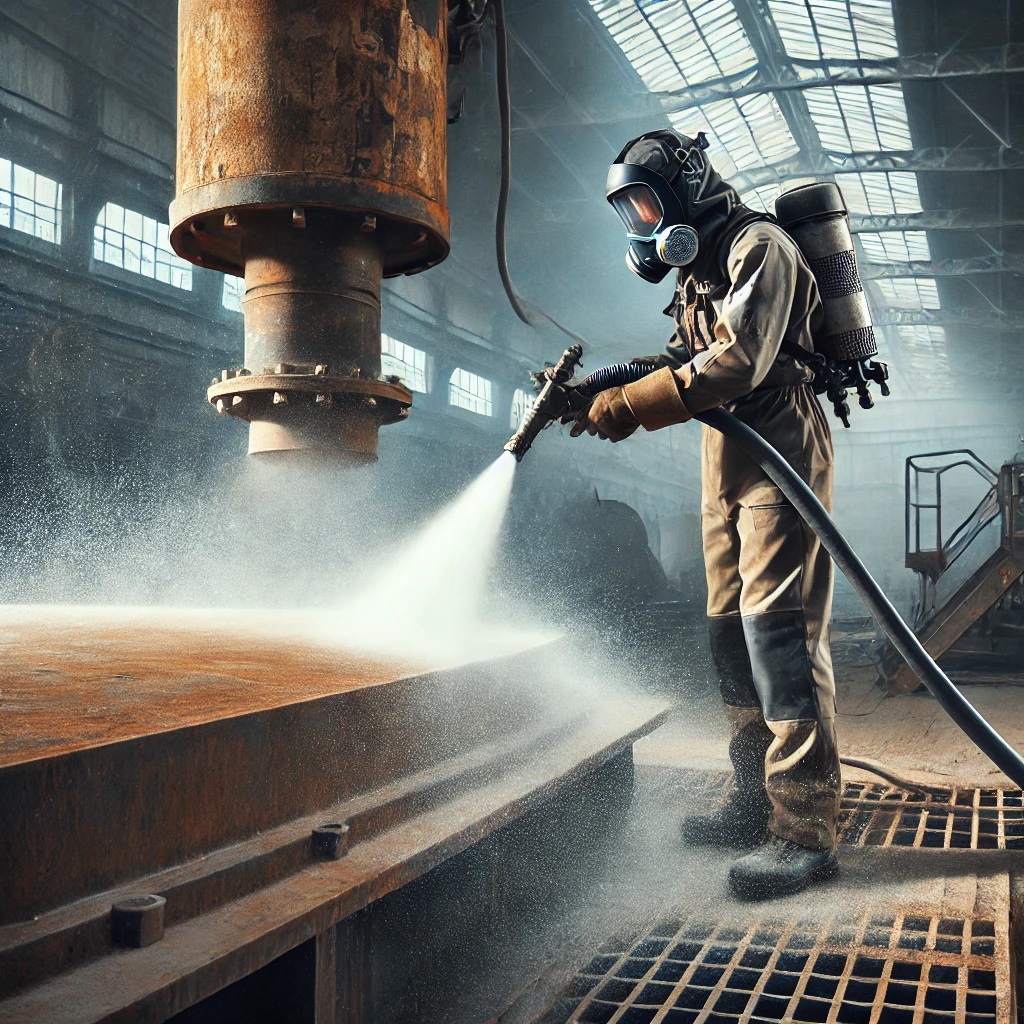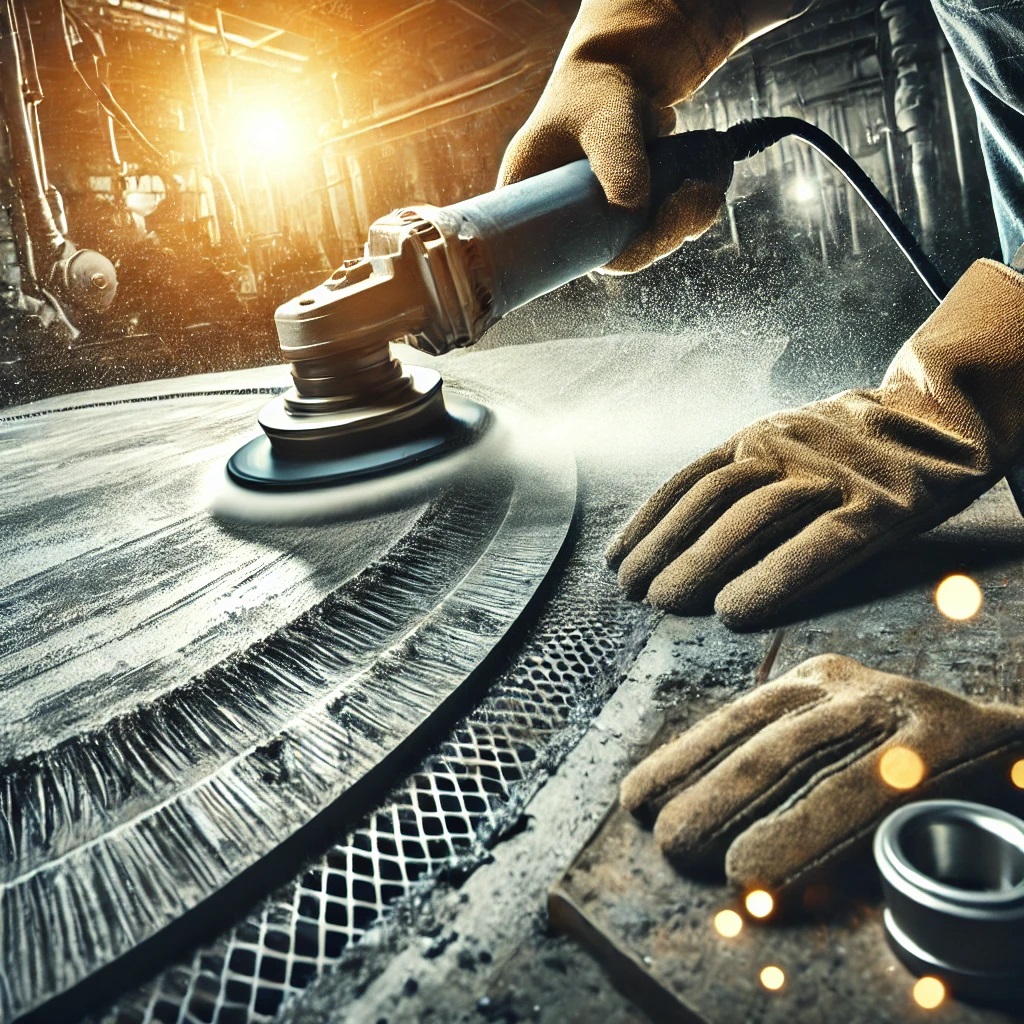Introduction: Why Maintenance Is the Lifeline of Sandblasting
Sandblasting has become an essential process across industries—from automotive restoration and shipbuilding to construction, aerospace, and precision manufacturing. By propelling abrasive media at high speed, it prepares surfaces for painting, coating, or finishing with unmatched efficiency.
But here’s the catch: sandblasting equipment works under extreme stress. High-pressure air, abrasive media, and constant wear mean that without regular maintenance, performance drops fast. Downtime, uneven finishes, safety hazards, and costly repairs can quickly pile up.
As Google Trends shows, interest in “dustless sandblasting”, eco-friendly abrasives, and predictive maintenance has been rising. That’s why today, proper maintenance isn’t just about extending equipment life—it’s also about safety, compliance, and keeping up with modern blasting practices.
In this guide, I’ll walk you through a comprehensive maintenance roadmap—from daily inspections to annual overhauls—so you can keep your sandblasting equipment running smoothly, safely, and efficiently.
Why Is Sandblasting Equipment Maintenance So Important?
Before getting tactical, let’s set the stage:
-
Protects Your Investment 🛠️: Industrial-grade sandblasters, compressors, and dust collectors are expensive. Maintenance prevents premature wear and costly replacements.
-
Ensures Consistency in Results 🎯: A worn nozzle or clogged abrasive line can ruin a surface finish, forcing rework and wasting labor.
-
Minimizes Downtime ⏱️: Unplanned shutdowns can delay projects and damage your reputation.
-
Improves Safety ⚠️: Leaking hoses, dust clouds, or faulty PPE can put workers at risk.
-
Keeps You Compliant 📋: With stricter environmental and workplace safety regulations, well-maintained equipment helps you stay audit-ready.
What Should You Check Daily Before Sandblasting?
Think of daily maintenance as your first line of defense. A few minutes of inspection saves hours of downtime.
✅ Hoses & Fittings
-
Look for cracks, leaks, or loose couplings.
-
Replace damaged gaskets immediately.
✅ Nozzles & Liners
-
Check for uneven wear—especially if you notice a change in blast pattern.
-
Ceramic nozzles wear faster; tungsten carbide lasts longer but still needs monitoring.
✅ Air Compressor
-
Verify oil levels (if oil-lubricated).
-
Drain condensate from air tanks to avoid moisture contamination.
-
Check filters for clogging.
✅ Abrasive Media Flow
-
Inspect for clumps, moisture, or contamination.
-
Sift recycled media to remove debris.
✅ Safety Systems
-
Inspect PPE (helmets, respirators, gloves).
-
Test dust collectors and ventilation systems.
👉 Daily checks may sound basic, but they prevent small issues—like a leaky hose—that could escalate into system-wide failures.
Weekly and Monthly Maintenance: Going Beyond the Basics
Weekly Checklist
-
Clean Blast Pot and Cyclone Separator: Prevent clogs and uneven flow.
-
Inspect Valves and Couplers: Lubricate shut-off valves; check for tight seals.
-
Check Compressor Belts and Pulleys: Replace worn or frayed belts.
-
Monitor Dust Collector Bags/Filters: Clean or replace if airflow decreases.
Monthly Checklist
-
Replace Worn Nozzles: A 1/16-inch increase in nozzle bore can reduce efficiency by 15%.
-
Inspect Seals and O-Rings: Replace if brittle or leaking.
-
Lubricate Moving Parts: From foot pedals to control valves.
-
Calibrate Pressure Regulators: Ensure consistent blasting pressure.
Seasonal and Annual Maintenance
Seasonal (Every 3–6 Months)
-
Air Treatment Systems: Replace desiccant or carbon filters in dryers.
-
Containment Structures: Inspect for cracks, leaks, or rust in blast rooms.
-
PPE Servicing: Replace respirator filters, check airflow indicators.
Annual (Deep Overhaul)
-
Full System Audit: Inspect hoses, tanks, compressors, and dust systems for structural integrity.
-
Pressure Vessel Recertification: In many regions, annual inspection is legally required.
-
Replace Key Components: High-wear items like blast hoses, valves, and couplings.
-
Safety Training Refresh: Ensure operators are updated on protocols.
Emerging Trends in Sandblasting Maintenance
1. Predictive Maintenance with Smart Sensors 📡
IoT devices now monitor air pressure curves, vibration, and abrasive flow in real time, predicting failures before they happen.
2. Dustless & Wet Sandblasting 🌊
Dustless systems reduce airborne hazards but require added maintenance for water pumps, filters, and corrosion control.
3. Eco-Friendly Abrasives 🌱
Switching to garnet, glass beads, or plastic media? Each requires different handling and cleaning routines.
4. Robotic and Automated Sandblasting 🤖
Automation reduces operator fatigue but introduces new maintenance needs: robotic arm lubrication, cycle monitoring, and camera cleaning.
Common Troubleshooting Scenarios
Problem 1: No Abrasive Flow
-
Cause: Moisture in pot, clogged valves, collapsed hose.
-
Fix: Drain moisture, clear clogs, replace hoses.
Problem 2: Uneven Blast Pattern
-
Cause: Worn nozzle or contaminated media.
-
Fix: Replace nozzle, sift or change abrasive.
Problem 3: Excessive Dust in Chamber
-
Cause: Full dust collector, worn seals, fan malfunction.
-
Fix: Empty collector, replace seals, inspect fan motor.
Problem 4: Compressor Overheating
-
Cause: Dirty filters, overworked cooling system, low oil.
-
Fix: Clean filters, service coolers, top-up or change oil.
Sandblasting Maintenance Best Practices (Quick Table)
| Task | Frequency | Why It Matters |
|---|---|---|
| Inspect hoses & couplings | Daily | Prevents leaks & accidents |
| Drain compressor condensate | Daily | Avoids moisture contamination |
| Replace nozzle | Monthly (or earlier if worn) | Ensures efficiency |
| Service dust collector | Weekly/Monthly | Controls dust & safety |
| Air dryer maintenance | Seasonal | Protects media flow |
| Full equipment audit | Annual | Extends lifespan |
Conclusion: Maintenance = Performance + Safety + Profit
Sandblasting is one of the toughest jobs on equipment—but also one of the easiest to ruin through neglect. By following daily, weekly, seasonal, and annual maintenance routines, you’ll:
-
Extend equipment lifespan.
-
Guarantee consistent, professional finishes.
-
Minimize downtime and safety hazards.
-
Stay compliant with environmental and workplace regulations.
Remember: maintenance is not an expense—it’s an investment. By treating it as part of your blasting workflow, you’ll keep operations smooth, safe, and profitable for years to come.
Frequently Asked Questions (FAQ)
1. How often should I replace my sandblasting nozzle?
Nozzles wear faster than almost any component. Depending on abrasive type, a ceramic nozzle may last 6–8 hours, while tungsten carbide can last 300–400 hours. Always measure bore size—if it’s enlarged by 1/16″, replace it.
2. Can I use water to clean sandblasting equipment?
Yes, but only on components designed for wet cleaning. Dry thoroughly afterward to avoid corrosion, especially in valves and couplers.
3. What’s the difference between preventative and predictive maintenance?
-
Preventative: Scheduled maintenance at fixed intervals (e.g., monthly nozzle replacement).
-
Predictive: Uses sensors and data to replace parts only when wear is detected, reducing waste and downtime.
4. Which abrasive media is easiest on equipment?
Glass beads and plastic media are gentler on nozzles and hoses compared to steel grit or aluminum oxide. Choosing eco-friendly abrasives may also extend system life.
5. What are the signs my compressor needs servicing?
Look for higher discharge temperatures, unusual vibrations, oil leaks, or reduced pressure. Ignoring these signs can lead to costly rebuilds.
6. Does dustless blasting reduce maintenance needs?
It reduces airborne dust but increases water-related maintenance: filters, pumps, rust prevention, and drying procedures.
7. How do I know when to replace my blast hose?
If you feel soft spots, bulges, or see cracks, replace immediately. A failed hose can cause dangerous blowouts.
8. Can maintenance really save money long-term?
Yes—studies show well-maintained sandblasting systems reduce abrasive consumption by 20–25% and extend equipment lifespan by years.


